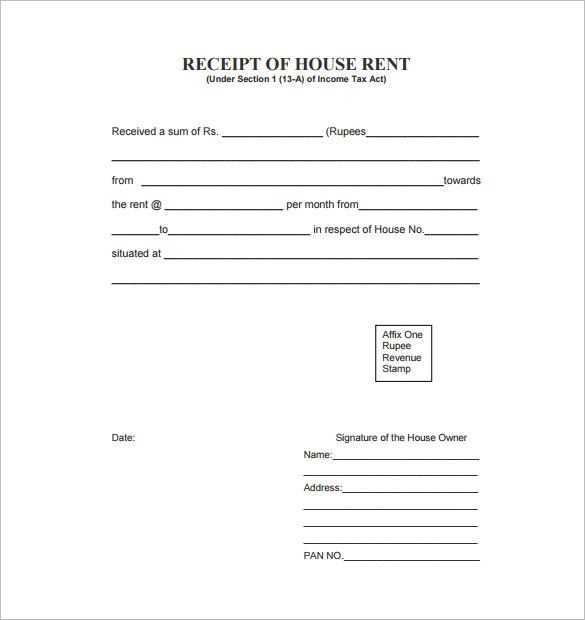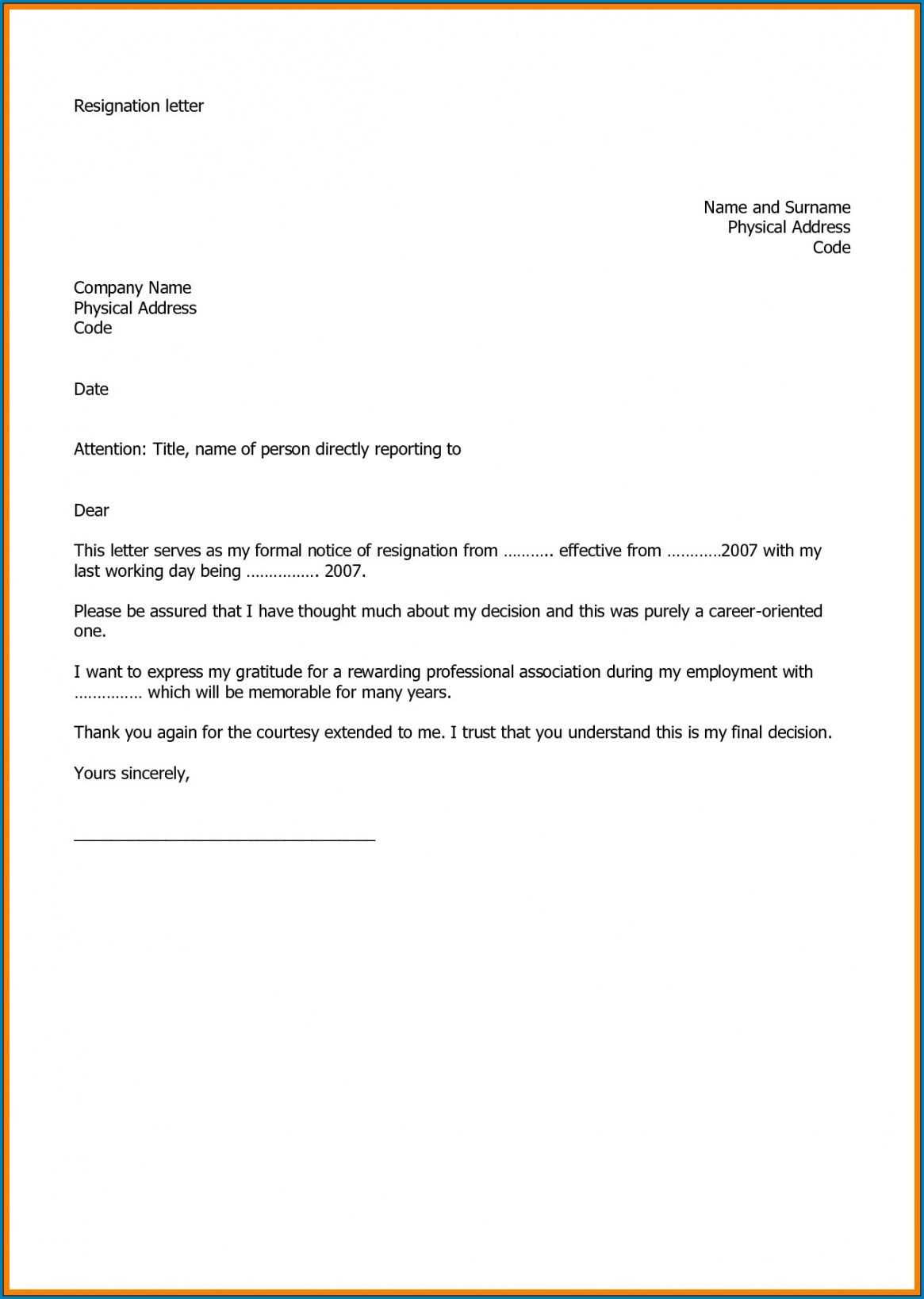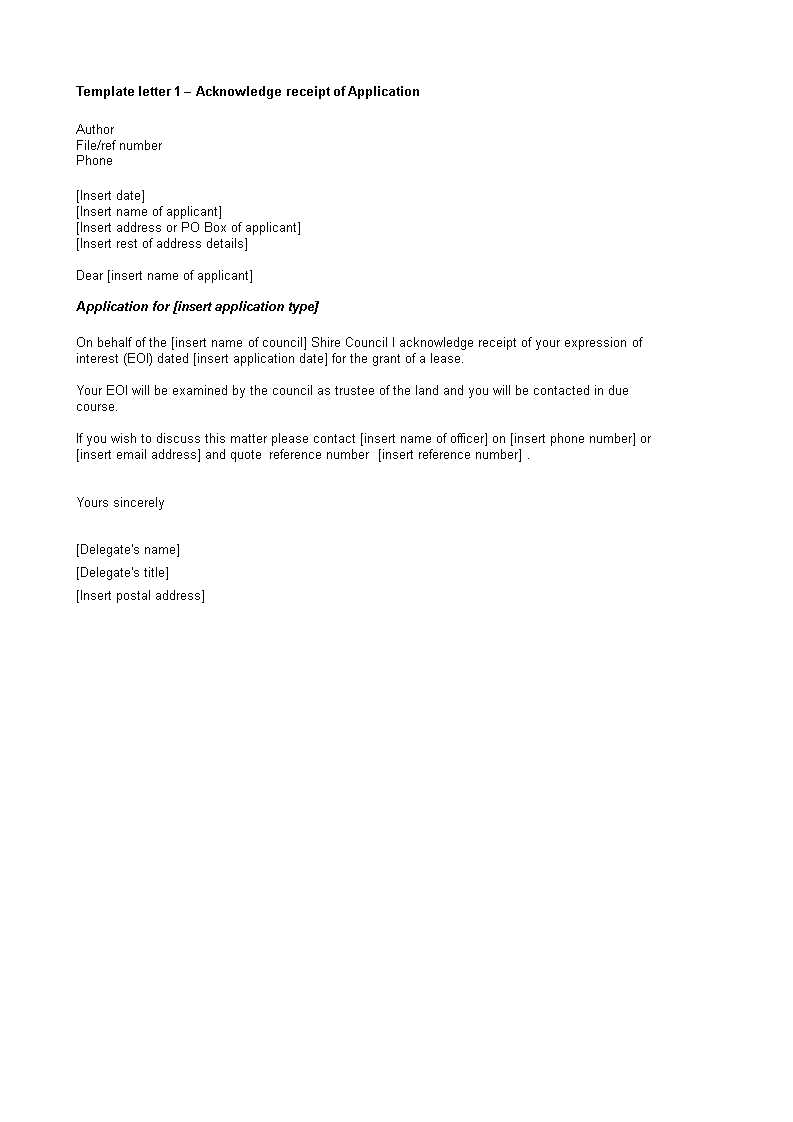
Confirming the receipt of a letter ensures clarity and builds trust in professional and personal correspondence. A well-structured confirmation message should include the date, the sender’s name, a brief acknowledgment of the received document, and any next steps if required.
For formal business communication, keep the tone polite and to the point. Mention the exact document name and date to avoid confusion. If a response is expected, state when it will be provided. Example: “We acknowledge receipt of your letter dated [insert date] regarding [subject]. Our team is reviewing the details, and we will respond by [response date].”
In less formal settings, a simple but clear confirmation works well. For instance: “Thank you for your letter. We’ve received it and will get back to you soon.” Adjust the wording based on the context while maintaining professionalism.
Using a standard template streamlines communication, reduces misunderstandings, and provides a reference for future interactions. Below, you’ll find a ready-to-use template that you can customize based on your needs.
Letter Receipt Confirmation Template
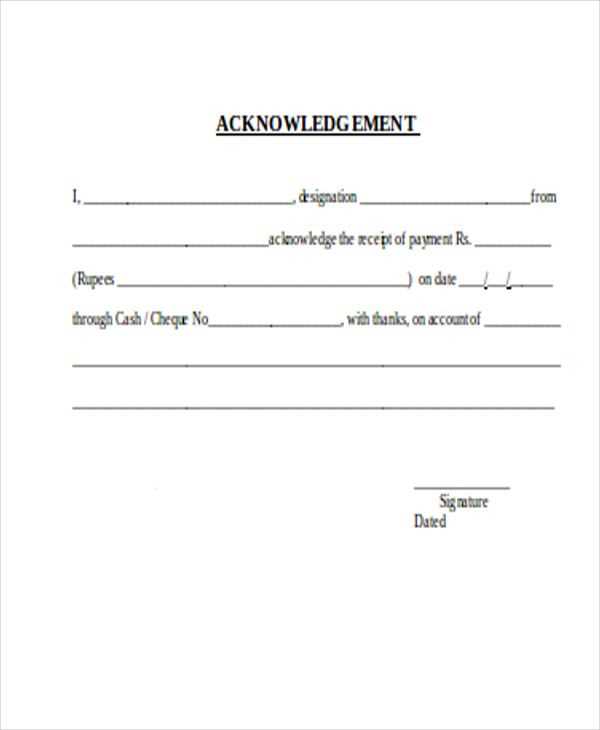
To create an efficient letter receipt confirmation template, ensure clarity and simplicity. Begin with a brief statement confirming the receipt of the letter, followed by relevant details such as the sender’s name, date of receipt, and any reference number associated with the letter. Acknowledge the content of the letter and outline the next steps if needed. Keep the tone professional and concise.
Example Template
Dear [Sender’s Name],
We acknowledge the receipt of your letter dated [Date]. The content of your letter has been reviewed, and we will take the necessary actions accordingly. If any additional information is required, we will reach out to you directly.
Thank you for your communication.
Sincerely,
[Your Name]
[Your Position]
Key Elements to Include
Make sure your letter receipt confirmation includes the following elements:
- Sender’s name and contact information.
- Date of receipt.
- Brief mention of the letter’s content or purpose.
- Any follow-up actions or timeline.
- Sender’s signature or your own for authenticity.
Key Elements to Include in a Receipt Confirmation Letter
Begin with a clear acknowledgment of the item or document received. State the specific date of receipt and identify what has been received, such as the product, payment, or document. This provides a straightforward record for both parties involved.
Recipient and Sender Information
Include the names and contact information of both the recipient and sender. Ensure the details are accurate to avoid confusion later on. This information should appear at the top of the letter for easy reference.
Details of the Received Item
List the key details of the item or document, such as serial numbers, reference codes, or the quantity received. If applicable, note any condition issues or exceptions to ensure transparency. If the item is a document, mention its title and date for clarity.
Formal Wording Examples for Different Situations
When confirming receipt of a letter, it’s important to use clear and respectful language. Below are a few examples tailored to different situations.
1. Acknowledging Receipt of a General Letter
Use this format when you are confirming the receipt of a standard letter without any immediate need for action.
- “Thank you for your letter, which I received on [date]. I will review it and respond accordingly.”
- “I acknowledge receipt of your letter dated [date]. I will get back to you shortly with further information.”
2. Confirming Receipt of an Important Document
For cases where the letter contains important documents or materials that need further processing, use the following wording:
- “I confirm the receipt of the documents you sent on [date]. I will ensure they are processed promptly.”
- “Your letter, along with the enclosed documents, has been received. We will begin reviewing them and will contact you if further information is needed.”
3. Acknowledging a Formal Request or Inquiry
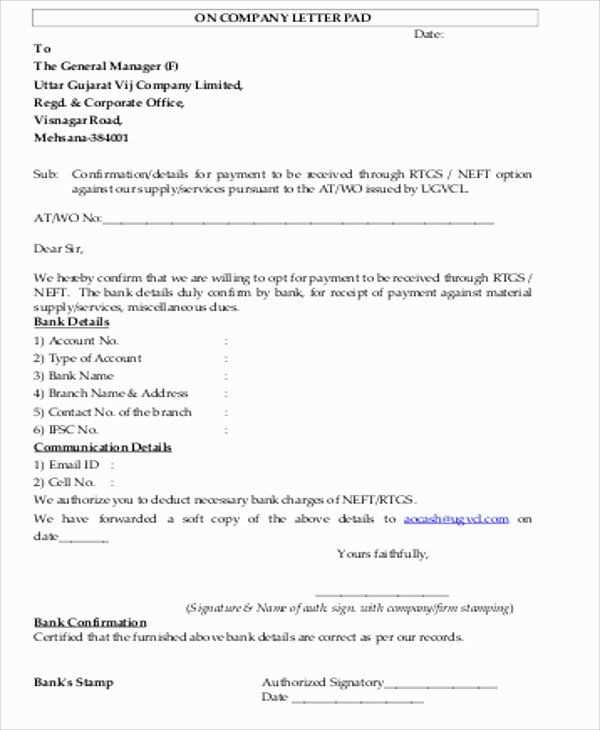
If you are confirming receipt of a formal request or inquiry, use a more formal tone and indicate the next steps.
- “We have received your request dated [date]. It is under review, and we will notify you of the outcome at the earliest opportunity.”
- “Your inquiry regarding [subject] has been received and is being processed. You will receive a response no later than [date].”
4. Confirming Receipt of a Job Application
When confirming receipt of a job application, ensure to express appreciation for the candidate’s interest while also indicating the next steps.
- “Thank you for submitting your application for the position of [position title]. We have received your resume and will be in touch regarding the next steps.”
- “We appreciate your interest in joining our team at [company name]. Your application has been received, and we will be reviewing it shortly.”
Common Mistakes to Avoid When Writing a Confirmation Letter
Avoid vague language that could lead to confusion. Be specific about the details being confirmed. If you’re confirming receipt of a document, mention the exact document name, date, and any relevant details that make the confirmation clear.
1. Missing Key Details
Never leave out important information. Include the sender’s name, the subject of the letter, and the date of receipt. The recipient should easily identify the context of the confirmation.
2. Overcomplicating the Message
Keep the letter concise. Avoid using complex sentences or unnecessary technical jargon that could confuse the recipient. Stick to the point without overloading the reader with excessive details.
3. Incorrect Tone
Don’t use a tone that’s too formal or overly casual. Aim for a professional yet friendly tone. This balance ensures that the confirmation feels respectful and approachable without being too stiff or distant.
4. Inaccurate or Missing Dates
Confirm the exact date of receipt or any deadlines related to the subject matter. Without clear dates, there’s room for misunderstanding.
5. Failing to Acknowledge the Action Taken
Make sure to specify what action will be taken next. Whether you’re processing a request or confirming the next steps, provide clarity on how you’ll proceed.
6. Leaving Out a Thank You
Always express gratitude for the document or communication received. It shows professionalism and helps maintain a positive tone.
7. Using Generic Language
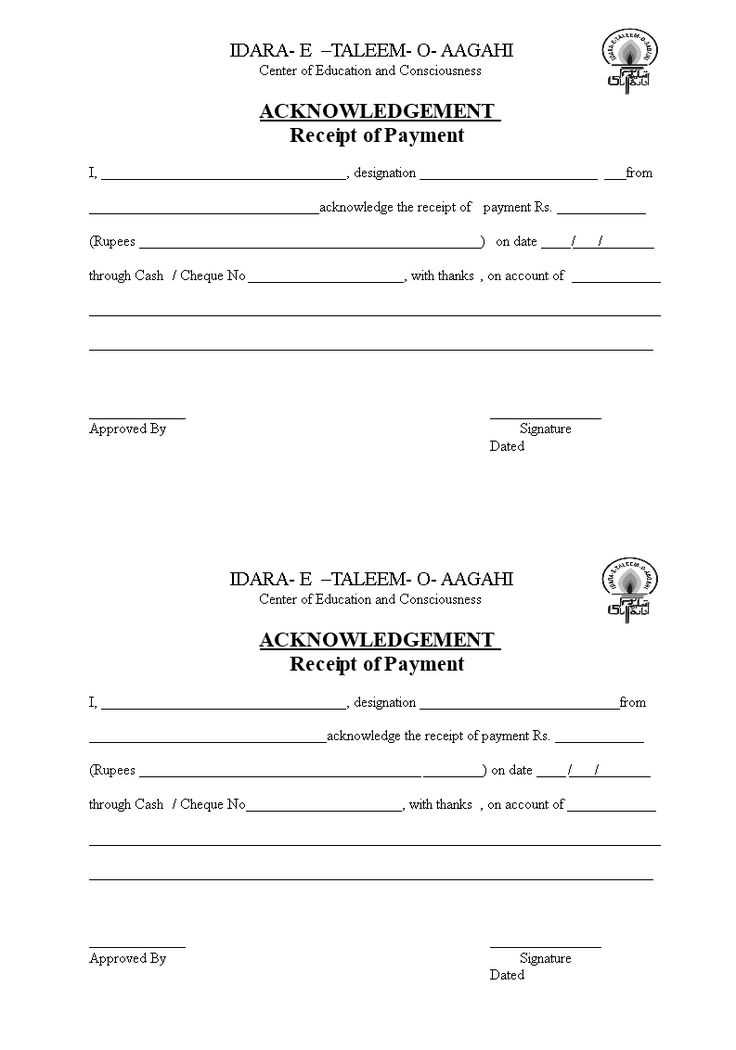
Avoid generic phrases like “this letter serves as confirmation.” Tailor your message to the situation at hand, and ensure the recipient feels their specific request is acknowledged.
